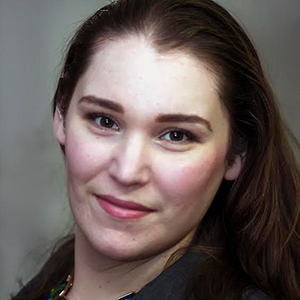IMAGE workshop reduces barriers to research grant success
After a four-year hiatus, the American Society for Biochemistry and Molecular Biology’s Interactive Mentoring Activities for Grantsmanship Enhancement, or IMAGE, workshop will return in June. To support this workshop over the next several years, the National Science Foundation has awarded more than $1 million to the ASBMB.
Why do we offer a workshop on grantsmanship?

While I haven’t directly experienced many of the highs and lows of grant success and rejection, I’ve had an up-close view of trends in who is — and, importantly, who is not — funded. Before I worked for the ASBMB, I spent part of each year analyzing extramural funding at nearly 150 institutions across the U.S. I noticed that total dollars received might vary year over year, but generally (and unsurprisingly), the trends were consistent: The big-name institutions you would expect to see at the top of the list were continually successful, while less well-known schools rarely received much external research funding.
Drilling down to the level of principal investigator, I’d see some names every year with multiple awards, while others appeared only sporadically. I was delighted when I saw an early-career faculty member receive what appeared to be their first major research grant, but not all of them could maintain that funding. By and large, even for early-career researchers, their institution’s overall funding predicted their continued success.
My project didn’t look any further into the demographics of individual PIs, but a recent analysis by Mike Lauer and Deepshikha Roychowdhury at the NIH showed what many observe to be the case: Funding tends to go to white, non-Hispanic investigators and men.
However, good ideas — good research questions — can come from anywhere and anyone.
IMAGE then and now
The IMAGE workshop is designed for early-career faculty, those from historically excluded backgrounds, and those at institutions with limited infrastructure to support grant development and submission. IMAGE offers information about behind-the-scenes grant review processes at the National Institutes of Health and the NSF, and each participant gets individual feedback on their grant application while it is in development.
To make the most of the IMAGE experience, participants must already have prepared a one-page NSF-styled project summary or NIH-styled specific aims page that they are ready to present for feedback. Participants come away from this workshop not just with strategies to strengthen their research narratives but also with coaches and mentors to help them flesh out their proposals and follow through with submission.
DETAILS
What: The ASBMB’s IMAGE workshop
When: June 8 – 11, 2023
Where: Washington, D.C.
To apply: asbmb.org/grantwriting
Application deadline: April 15
Questions: education@asbmb.org
The topics discussed and the relationships forged at IMAGE can serve a critical need for participants. Both the workshop itself and the built-in mentoring component are designed to address barriers these individuals often face in the pursuit of funding — whether seeking that first grant, resubmitting or undergoing renewal — by providing information about the process and guidance to navigate the extramural funding landscape. To remove an additional barrier, the new NSF award to the ASBMB includes travel support for many IMAGE participants.
With previous support from the NSF, the ASBMB hosted IMAGE workshops from 2013 to 2019; more than 200 scientists participated in those seven years. Many of these researchers went on to receive funding, and according to research done by the ASBMB, those who applied for grants in the immediate term after the workshop were notably more successful in securing funding than comparable grant applicants who did not participate.
Those earlier IMAGE workshops were aimed at senior postdoctoral scientists and early-career faculty. Many of these past participants now have transitioned to their midcareer phase, which can be particularly challenging for some researchers, even those who experienced early success in applying for grants. That’s why the new NSF award includes a focus on bringing some past participants back for refresher coaching and input. Early success doesn’t always predict continued success, as I saw in my former project. The new IMAGE aims to support faculty not just at the beginning of their funded research but throughout their careers.
As I said, good ideas can come from anyone, anywhere. The upcoming IMAGE workshop will help scientists turn their good ideas into strong proposals and see those proposals through to submission, and it will move the funding odds a little more in their favor.
Enjoy reading ASBMB Today?
Become a member to receive the print edition four times a year and the digital edition monthly.
Learn moreFeatured jobs
from the ASBMB career center
Get the latest from ASBMB Today
Enter your email address, and we’ll send you a weekly email with recent articles, interviews and more.
Latest in Careers
Careers highlights or most popular articles

Building the blueprint to block HIV
Wesley Sundquist will present his work on the HIV capsid and revolutionary drug, Lenacapavir, at the ASBMB Annual Meeting, March 7–10, in Maryland.

Upcoming opportunities
Present your research alongside other outstanding scientists. The #ASBMB26 late-breaking abstract deadline is Jan. 15.

Designing life’s building blocks with AI
Tanja Kortemme, a professor at the University of California, San Francisco, will discuss her research using computational biology to engineer proteins at the 2026 ASBMB Annual Meeting.

Upcoming opportunities
#ASBMB26 late-breaking abstract submission opens on December 8. Register by Jan. 15 to get the early rate on our Annual Meeting.

Make your abstract stand out
Ensure your research is impossible to overlook. Get quick, practical reminders for crafting an abstract that attracts readers and helps you build connections at the conference.

Inside industry postdocs
As more Ph.D. scientists look beyond academia, industry postdocs offer a new kind of training, where mentorship meets mission-driven research. Fellows at Pfizer and Genentech share how these programs prepare them to translate discovery into impact.

